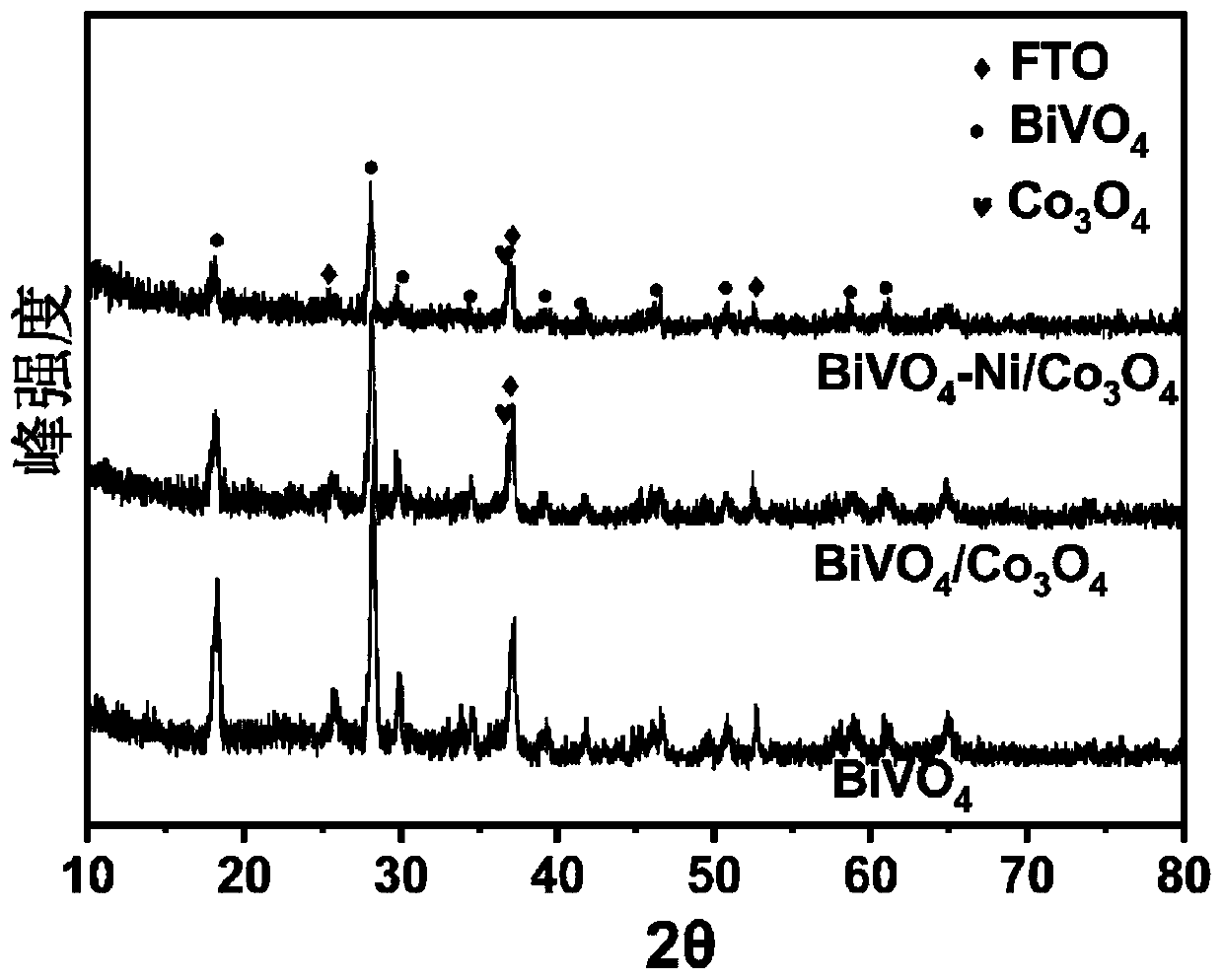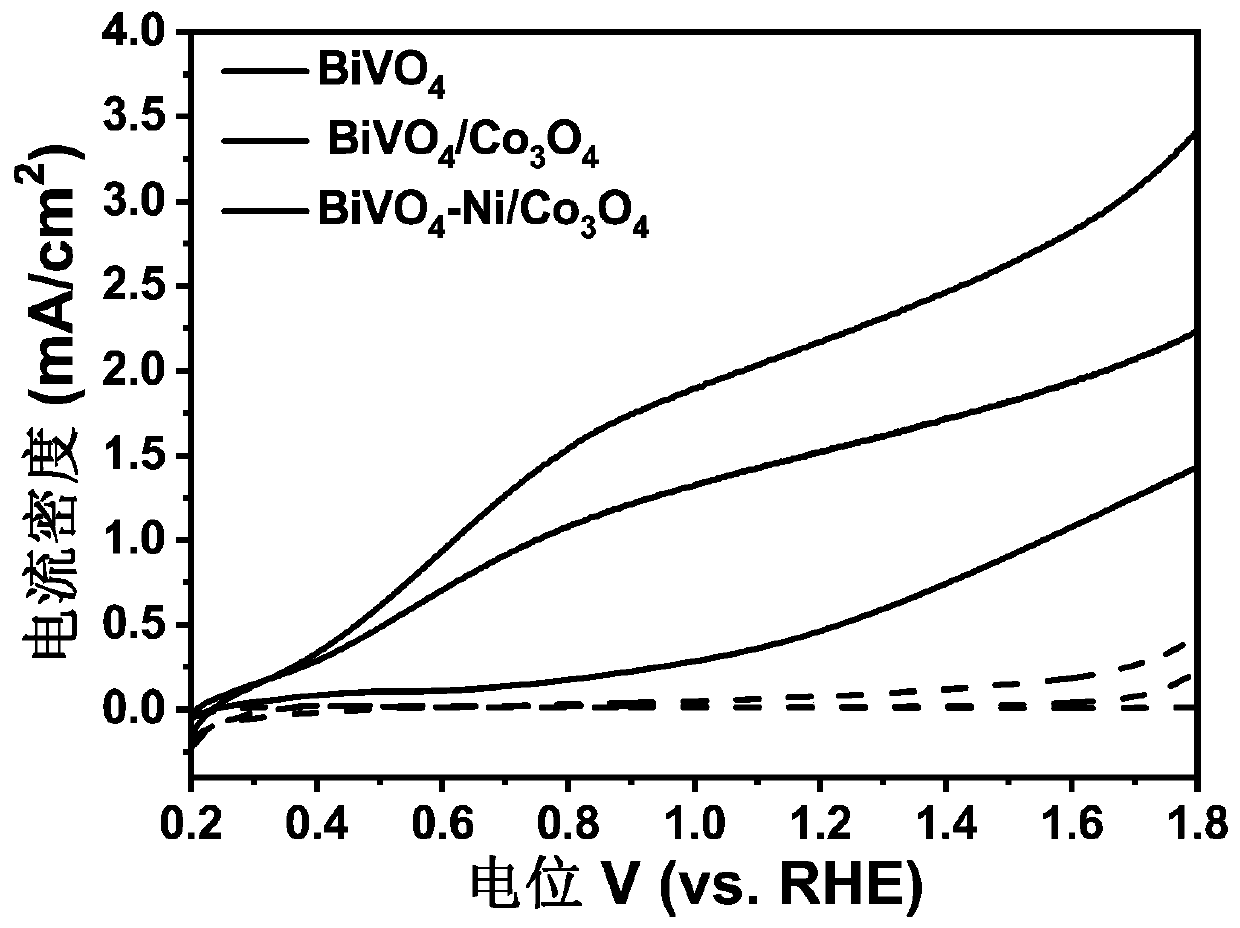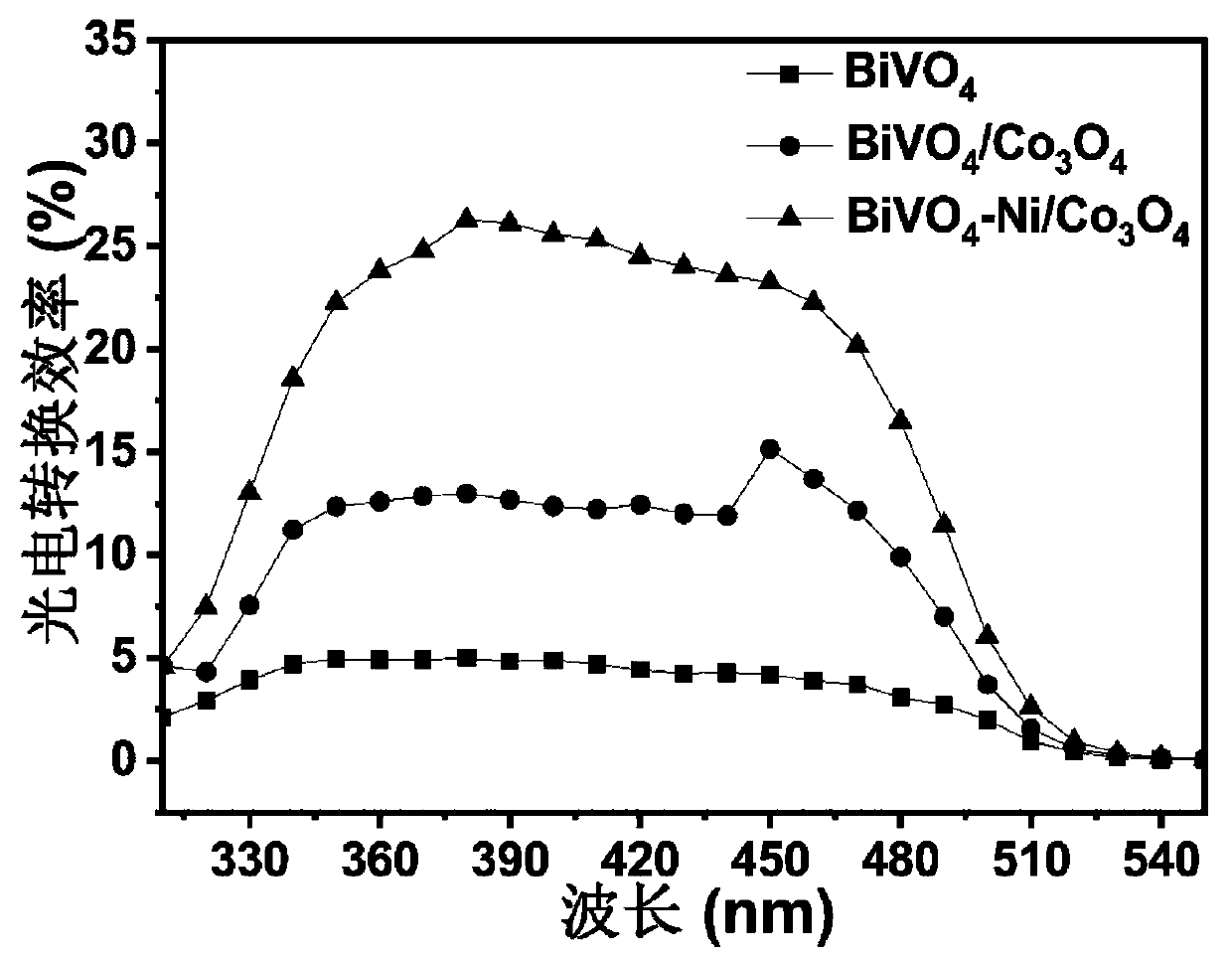Synthesis method of BiVO4-Ni/Co3O4 heterojunction and application of BiVO4-Ni/Co3O4 heterojunction to photoelectrochemical hydrolysis
A synthesis method and heterojunction technology, applied in the direction of electrolysis process, electrolysis components, chemical instruments and methods, etc., can solve the problems of limiting the hydrogen production efficiency of water decomposition, low photocurrent density, low charge separation efficiency, etc., and achieve low cost, Large reserves, the effect of inhibiting charge recombination
- Summary
- Abstract
- Description
- Claims
- Application Information
AI Technical Summary
Problems solved by technology
Method used
Image
Examples
Embodiment 1
[0026] A BiVO 4 -Ni / Co 3 o 4 The synthetic method of heterojunction is carried out according to the following steps:
[0027] A. BiVO on FTO substrate 4 Photoanode, the BiVO prepared on the FTO substrate 4 The steps of the photoanode are: (1) first dissolve 3.32g KI with 50mL of deionized water, then, dissolve 0.9701g Bi(NO 3 ) 3 ·5H 2 O was added to the above solution and stirred for 10 min, and nitric acid was added dropwise to adjust the pH to 1.0 to form a stable mixed solution A;
[0028] (2) Dissolve 0.4972g of p-benzoquinone in 20mL of absolute ethanol, seal the beaker and stir for 10min to obtain solution B;
[0029] (3) Solution B is slowly added to the above solution A and stirred for 10 minutes to form BiOI precursor solution C;
[0030] (4) A three-electrode system was adopted, with FTO as the working electrode, Pt wire as the counter electrode, and Ag / AgCl as the reference electrode. Under the bias voltage of -0.1V, a uniform dark red BiOI film was formed o...
Embodiment 2
[0038] A BiVO 4 -Ni / Co 3 o 4 The synthetic method of heterojunction is carried out according to the following steps:
[0039] A. BiVO on FTO substrate 4 Photoanode, the BiVO prepared on the FTO substrate 4 The steps of the photoanode are: (1) first dissolve 3.32g KI with 50mL of deionized water, then, dissolve 0.9701g Bi(NO 3 ) 3 ·5H 2 O was added to the above solution and stirred for 10 minutes, and nitric acid was added dropwise to adjust the pH to 1.3 to form a stable mixed solution A;
[0040] (2) Dissolve 0.4972g of p-benzoquinone in 20mL of absolute ethanol, seal the beaker and stir for 10min to obtain solution B;
[0041] (3) Solution B is slowly added to the above solution A and stirred for 10 minutes to form BiOI precursor solution C;
[0042] (4) A three-electrode system was adopted, FTO was used as the working electrode, Pt wire was used as the counter electrode, and Ag / AgCl was used as the reference electrode. Under the bias voltage of -0.1V, a uniform dark...
Embodiment 3
[0050] A BiVO 4 -Ni / Co 3 o 4 The synthetic method of heterojunction is carried out according to the following steps:
[0051] A. BiVO on FTO substrate 4 Photoanode, the BiVO prepared on the FTO substrate 4 The steps of the photoanode are: (1) first dissolve 3.32g KI with 50mL of deionized water, then, dissolve 0.9701g Bi(NO 3 ) 3 ·5H 2 O was added to the above solution and stirred for 10 min, and nitric acid was added dropwise to adjust the pH to 1.7 to form a stable mixed solution A;
[0052] (2) Dissolve 0.4972g of p-benzoquinone in 20mL of absolute ethanol, seal the beaker and stir for 10min to obtain solution B;
[0053] (3) Solution B is slowly added to the above solution A and stirred for 10 minutes to form BiOI precursor solution C;
[0054] (4) A three-electrode system was adopted, FTO was used as the working electrode, Pt wire was used as the counter electrode, and Ag / AgCl was used as the reference electrode. Under the bias voltage of -0.1V, a uniform dark red...
PUM
 Login to View More
Login to View More Abstract
Description
Claims
Application Information
 Login to View More
Login to View More - R&D
- Intellectual Property
- Life Sciences
- Materials
- Tech Scout
- Unparalleled Data Quality
- Higher Quality Content
- 60% Fewer Hallucinations
Browse by: Latest US Patents, China's latest patents, Technical Efficacy Thesaurus, Application Domain, Technology Topic, Popular Technical Reports.
© 2025 PatSnap. All rights reserved.Legal|Privacy policy|Modern Slavery Act Transparency Statement|Sitemap|About US| Contact US: help@patsnap.com



